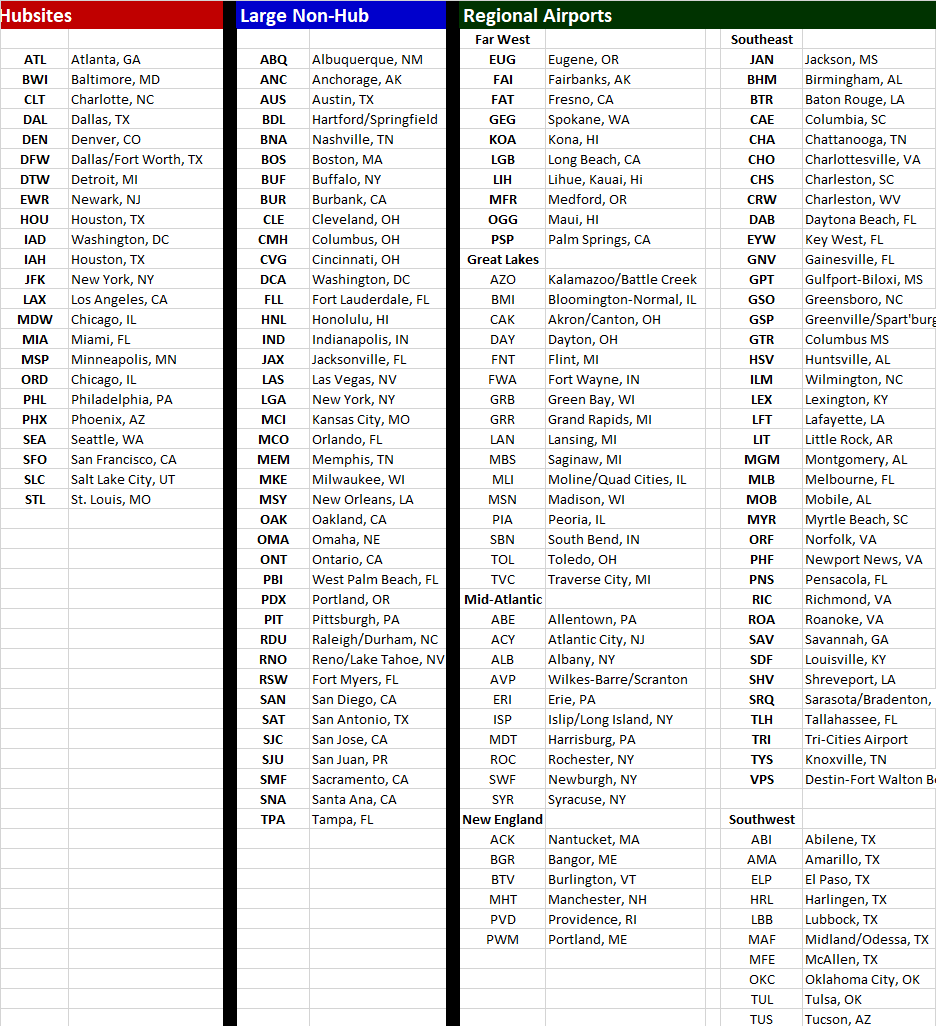Defining Airports By Role, Not Just Size
FAA Airport Categories Are Dysfunctional & Counter Productive
It is fully understood that in many planning venues, the use of the FAA classifications of airport – nonhub, small hub, etc. – still must be used in several areas when working with the Agency. For future planning, the nomenclature of the word “hub” today is galaxies away from this terminology.
In the USA, there are three distinct categories of airports, each with a different role in the air transportation system, and each with different planning and strategy needs.
![]() Hubsite Airports. These are airports where an airline or airlines intentionally aggregate flights in arrival and connecting banks, and 25% or more of the enplanements are specifically connecting between flights. We also use the term “hubsite” to clearly note that no airport itself is a connecting hub as this is the direct result of an airline determining to make it the site of a connecting hub operation.
Hubsite Airports. These are airports where an airline or airlines intentionally aggregate flights in arrival and connecting banks, and 25% or more of the enplanements are specifically connecting between flights. We also use the term “hubsite” to clearly note that no airport itself is a connecting hub as this is the direct result of an airline determining to make it the site of a connecting hub operation.
![]() Large Non-Hubsite Airports. These are airports that register 2.2 million or more enplanements and which are no specifically operated by any airline as a connecting operation.
Large Non-Hubsite Airports. These are airports that register 2.2 million or more enplanements and which are no specifically operated by any airline as a connecting operation.
![]() Regional Airports. These are airports with less than 2.2 million annual enplanements. These are then categorized by geographic region.
Regional Airports. These are airports with less than 2.2 million annual enplanements. These are then categorized by geographic region.
